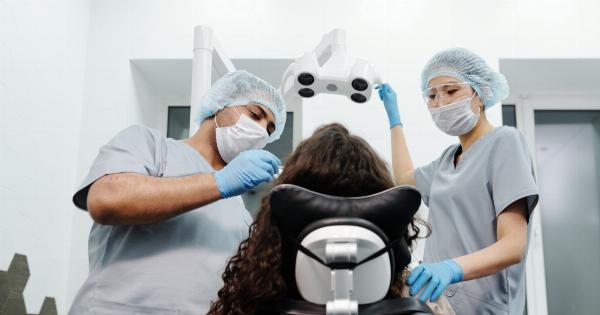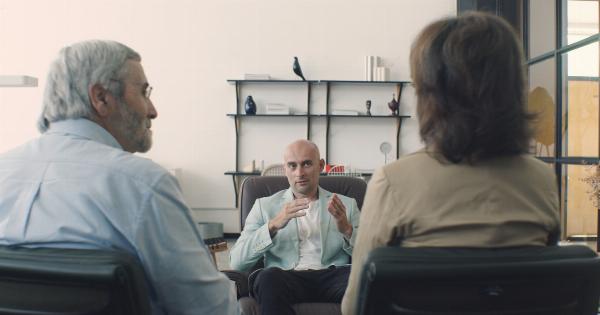Final bladder coccyx disorder is a debilitating condition that affects millions of individuals worldwide. Historically, treatment options for this condition have been limited and often ineffective in providing long-lasting relief.
However, recent advancements in medical technology and innovative techniques have revolutionized the way final bladder coccyx disorder is treated. In this article, we will explore one such groundbreaking technique that promises improved patient outcomes and enhanced quality of life.
Understanding Final Bladder Coccyx Disorder
Final bladder coccyx disorder, also known as coccydynia, is a condition characterized by pain and discomfort in the area surrounding the coccyx, or tailbone.
This pain can be chronic and severely impact a person’s ability to engage in daily activities and enjoy a fulfilling life. Common causes of final bladder coccyx disorder include trauma to the coccyx, prolonged sitting, childbirth, and various medical conditions.
Limitations of Traditional Treatment Approaches
Traditional treatment approaches for final bladder coccyx disorder have primarily focused on conservative measures such as pain medications, physical therapy, and the use of orthopedic cushions for sitting.
While these methods can provide temporary relief, they often fail to address the root cause of the issue and may only offer short-term benefits.
More invasive interventions, such as corticosteroid injections or surgical removal of the coccyx, have been reserved for cases where conservative treatments have failed.
However, these approaches come with their own set of risks and potential side effects, and their success rates vary significantly.
The Innovative Technique: Bladder Coccyx Fusion
Bladder coccyx fusion is an innovative surgical technique that has emerged as a promising solution for final bladder coccyx disorder.
This groundbreaking procedure involves the fusion of the coccyx to the surrounding bones, creating a stable and pain-free support structure.
The Procedure Process
The bladder coccyx fusion procedure begins with a comprehensive evaluation of the patient’s medical history, physical examination, and imaging studies.
This helps determine the underlying cause of the coccyx pain and identify any associated conditions that may require concurrent treatment.
During the surgery, the patient is placed under general anesthesia, and a small incision is made near the coccyx.
Specialized instruments are then used to remove the damaged or unstable segments of the coccyx and prepare the surrounding bones for fusion. A bone graft, typically taken from the patient’s hip or a bone bank, is then inserted between the coccyx and the neighboring bones to promote fusion.
Once the fusion is complete, the incision is closed, and the patient is monitored during the recovery period. Most patients can return home on the same day or after a short hospital stay.
Advantages of Bladder Coccyx Fusion
Bladder coccyx fusion offers several advantages over traditional treatment approaches:.
1. Long-lasting relief: By addressing the root cause of the disorder and providing a stable support structure, bladder coccyx fusion offers the potential for long-lasting pain relief.
2. Improved mobility: Many individuals with final bladder coccyx disorder experience limited mobility due to pain. Bladder coccyx fusion can help restore mobility and enhance overall quality of life.
3. Minimally invasive: The bladder coccyx fusion procedure typically involves a small incision and utilizes advanced surgical techniques, resulting in minimal tissue damage, reduced scarring, and faster recovery times.
4. Personalized treatment: Each bladder coccyx fusion procedure is tailored to the individual patient, taking into account their unique condition and needs.
Post-Operative Care and Recovery
Following bladder coccyx fusion surgery, patients are given guidelines for post-operative care and rehabilitation.
This typically includes instructions for pain management, wound care, physical therapy exercises, and gradually resuming normal activities.
The recovery period varies from patient to patient but generally ranges from a few weeks to a few months. It is crucial for individuals to follow their surgeon’s recommendations and attend follow-up appointments to ensure a successful recovery.
Potential Risks and Complications
As with any surgical procedure, bladder coccyx fusion carries some risks. These may include infection, bleeding, nerve damage, and fusion failure.
However, with proper pre-operative assessment and skilled surgical techniques, the risks can be minimized, and the benefits of the procedure can outweigh the potential complications.
Candidate Selection and Consultation
Not all individuals with final bladder coccyx disorder are suitable candidates for bladder coccyx fusion.
A thorough consultation with a qualified orthopedic surgeon or spine specialist is essential to determine if this technique is the right choice for the patient.
The consultation will involve a comprehensive assessment of the patient’s medical history, physical examination, and review of imaging studies.
Based on this evaluation, the surgeon will determine if bladder coccyx fusion is appropriate and discuss the potential benefits, risks, and recovery expectations with the patient.
Conclusion
Final bladder coccyx disorder can significantly affect a person’s daily life and overall well-being.
The innovative technique of bladder coccyx fusion offers a groundbreaking alternative for individuals who have exhausted traditional treatment options. By addressing the root cause of the pain and providing long-lasting relief, this surgery promises to improve patient outcomes and enhance their quality of life.
If you or a loved one is struggling with final bladder coccyx disorder, consult with a qualified orthopedic surgeon or spine specialist to explore all available treatment options, including bladder coccyx fusion.






























